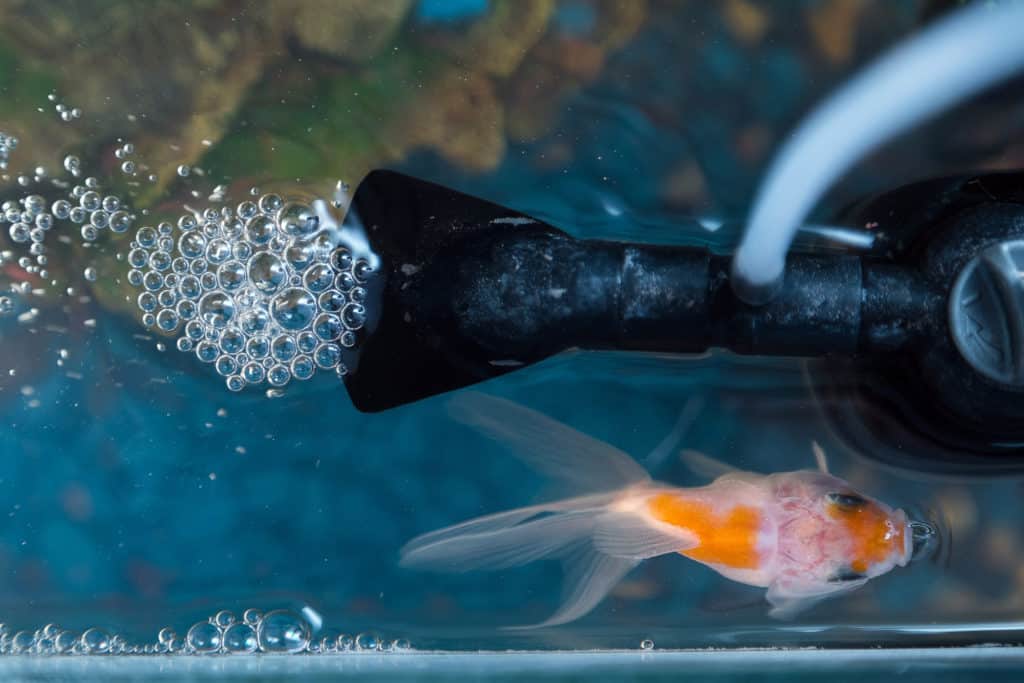
There’s a lot that goes into taking proper care of fish and the aquarium they live in: balancing pH, regulating temperatures, and making sure a tank is aerated.
You know what happens if your tank’s temperature or pH is off, but what happens when there isn’t enough aeration?
Aeration is just as important as every other factor of aquarium care.
What if you don’t have a pump, or your power goes out, and you still have to care for your fish?
What might happen to them?
Thankfully, there are quite a few ways to aerate a fish tank without a pump, and we have the top five methods right here.
The 5 Best Ways to Aerate a Fish Tank Without a Pump
1. A Good Filter
This option might not come as a surprise to you, but you can use a filter in place of a pump.
If you’ve got a good filter, it can be your primary source of aeration if it has a high flow rate.
The higher the flow rate, the higher the water pressure of the water coming back into your tank and the more aerated it will be.
However, if this is your primary method of aeration, you’ll have to make sure the filter is clean by checking it often.
Just be careful the water flow isn’t too powerful because that can disturb your fish.
It’s similar to the cup method, only you don’t have to do this yourself.
This is a method which should be paired up with another on this list. Just be careful not to overdo it, because yes, there is such a thing!
2. Plants

A really easy way to properly aerate your tank is to add more plants to your tank.
You’ll want to pick plants that will eat up carbon dioxide to produce oxygen instead of taking it up.
If you spread enough oxygen-producing plants across your aquarium, the need for a strong water flow becomes less of a priority.
However, when the lights are off, the plants will produce less oxygen.
Therefore, using plants will mean that you’ll either have to reduce the number of plants in your tank at night, or make sure the tank always has some kind of light source.
You’ll also have to adjust the plants you place in tanks according to what type of fish are being housed in the aquarium.
Here are a few plants worth considering.
Remember that you’re always free to shake it up a bit.
3. Hornwort
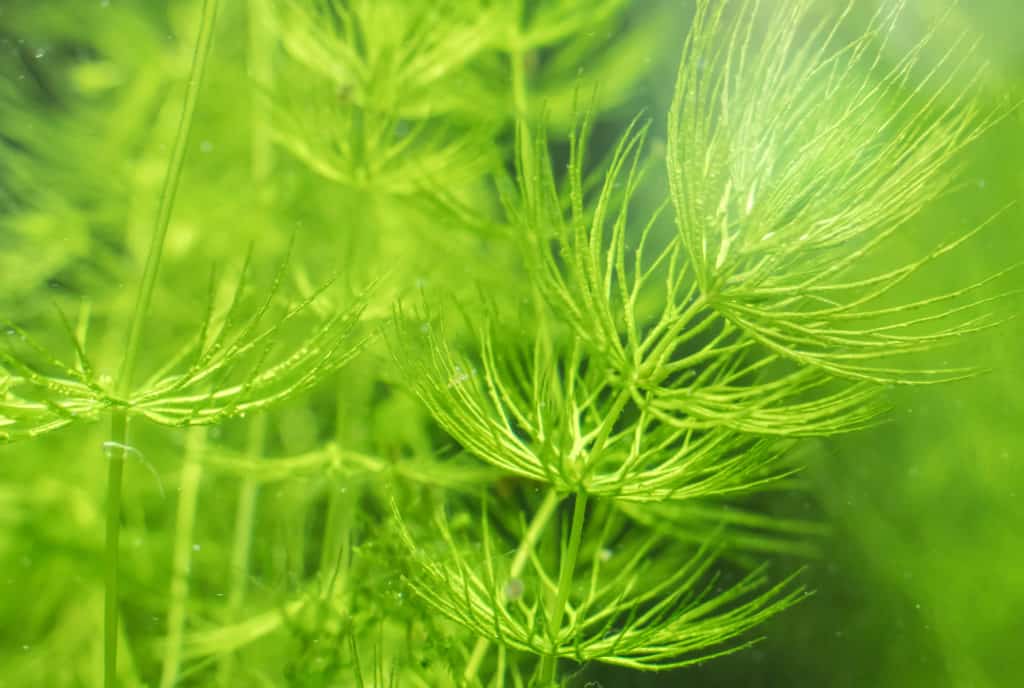
One is Hornwort.
It’s fast growing, easy to care for, and super hardy.
It’s highly recommended for slightly cooler tanks, where the water will have an easier time holding its oxygen.
They’re also nice for providing your fish with a little bit of shelter, and they look great in just about any tank.
They do best in tanks with a pH between 6.0 and 7.5, a temperature between 59 and 86 degrees, and are best planted in tanks 15 gallons or larger.
4. Eelgrass
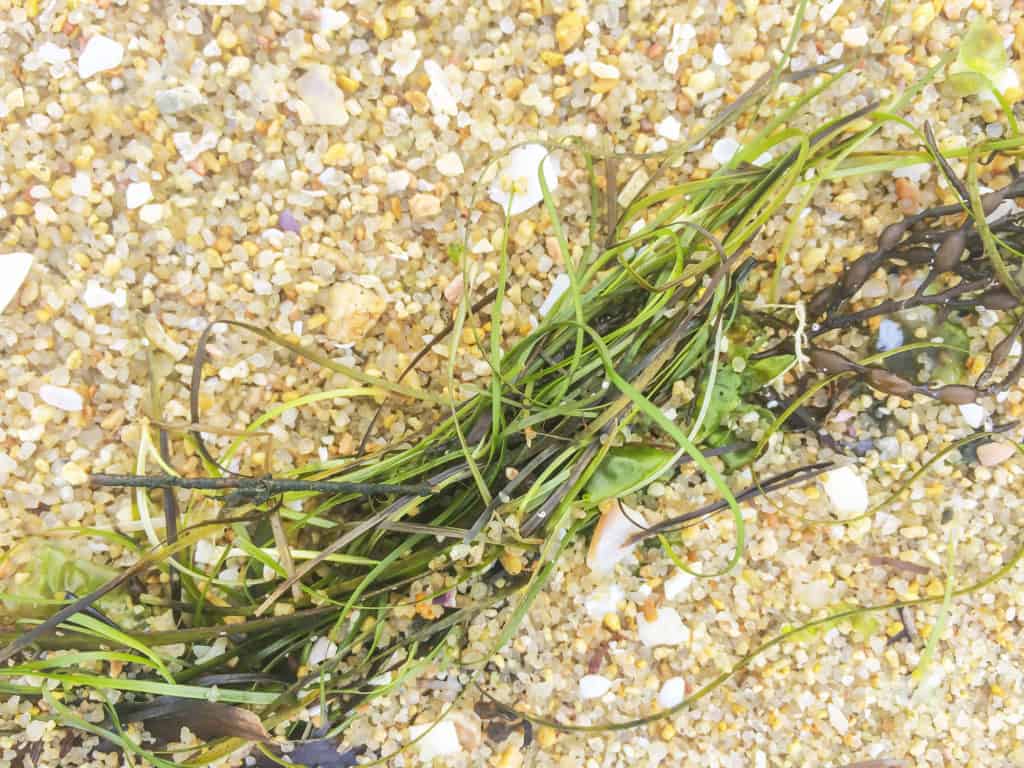
Another is Eelgrass, also known as vals or vallis, tape grass, and wild celery, which is, on top of being a huge help in oxygenating your tank, aesthetically pleasing and low maintenance.
This hardy plant is able to adapt to a wide variety of conditions, and there are a few different varieties to choose from.
Having a variety of choices is nice because you can oxygenate your aquarium while sticking to a theme.
This is a good option for tanks that have a pH of 6.8 to 8.0, a temperature of 65 to 85 degrees, and tanks that are no smaller than 10 gallons.
5. Ludwigia Repens
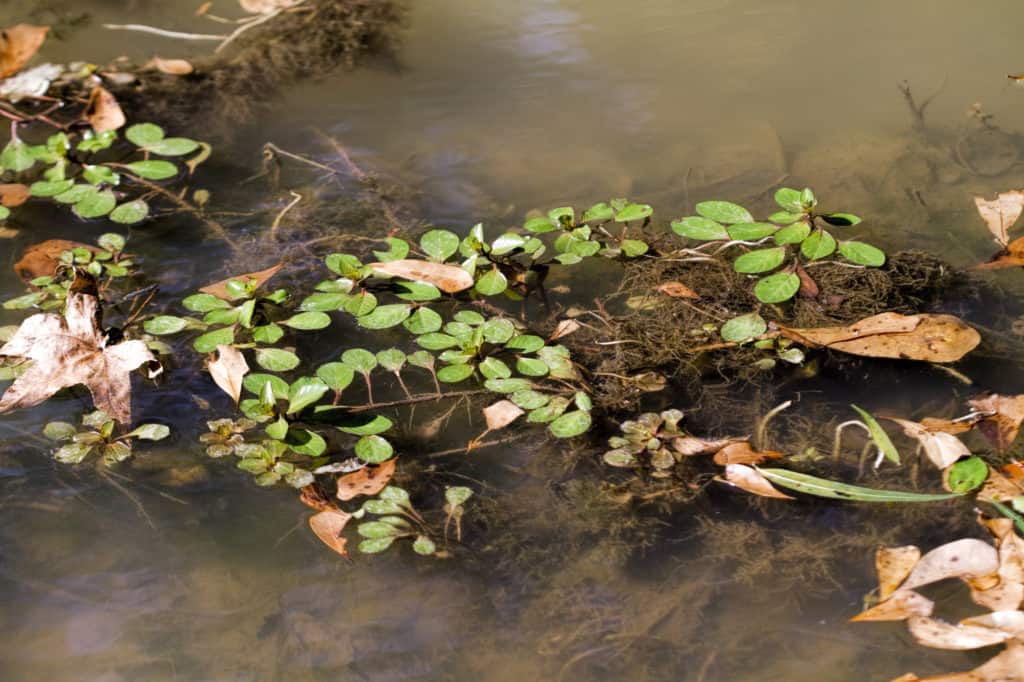
Ludwigia Repens is another absolutely gorgeous option.
It comes in red and green hues, is fast growing, and the different colors thrive in different temperatures.
It should help aid in oxygenation as soon as it roots in your tank.
This plant does better in tanks that are room temperature—between 60 and 80 degrees—and is ridiculously easy to care for.
Keep it in water that has a pH anywhere between 5 and 8, and in no smaller a home than 10 gallons, and it should be good to produce oxygen.
6. Anacharis
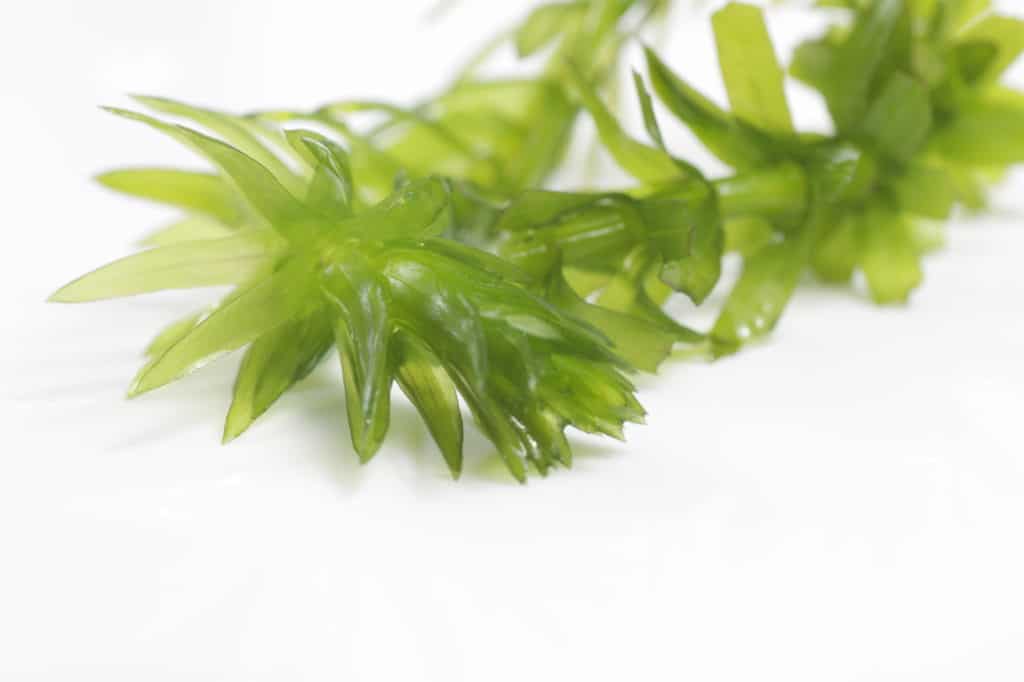
Another great option is to add Anacharis, otherwise known as the Brazilian waterweed and the Brazilian Elodea.
It’s easy to maintain, grows to be about eight inches tall, and is fast growing as well.
It requires a lot of light to thrive, prefers its water temperature anywhere between 60 and 80 degrees, its pH between 6.5 and 7.5, and is best for tanks 10 gallons or larger.
The Cup Method
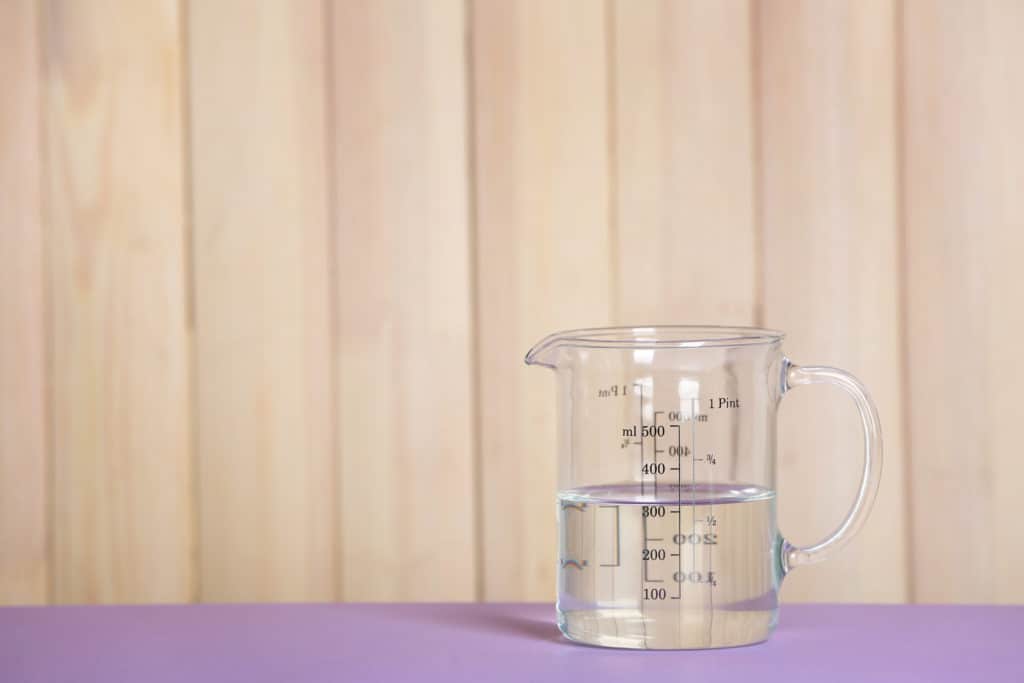
Another good method to give a shot is something called the “cup method“.
You simply take a cup or pitcher full of the tank’s water, lift it high above the tank, and pour it back in.
As the water falls back down, it will pick up oxygen to distribute throughout your tank.
The higher up you hold your cup, the deeper the air will go, but you can also disrupt gravel and stones on the bottom of your tank.
Some aquarists recommend placing a plate or a bowl on the bottom of the tank before pouring to avoid stirring up any gravel or stones.
Since this is something you have to do yourself, it’s something you’ll have to make a habit of doing.
This is also the best method to use if you lose power.
Waterfall Filter and Spray Bars

Another very simple way to aerate an aquarium is to invest in either a waterfall filter or a spray bar.
A waterfall filter is just what it sounds like. It’s a filter that mimics a natural waterfall and helps quite a bit in aerating your tank.
Though they’re more commonly used in ponds, there’s nothing stopping you from using a smaller waterfall filter in your home aquarium.
Your other option, the spray bar, is very similar to a waterfall filter.
Instead of letting the water simply fall back into your tank, it’s gently sprayed back in, which churns the surface and aids in aeration.
If you’re looking for gentler water movement, a spray bar seems to be the best option.
More Fish
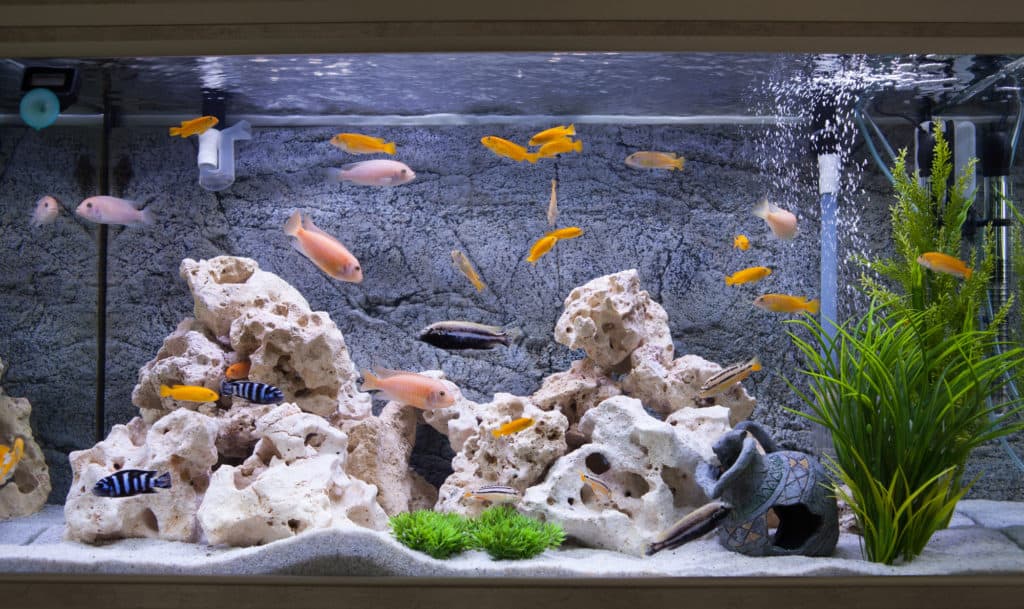
Believe it or not, you can actually add more fish to your tank to increase the aeration.
While the new fish will take up oxygen, the additional movement of the fish moving from the surface to the depths will help get more air down and into the water.
You’ll want to have very active fish.
The more movement, the better.
However, this is an aeration method which should be paired up with another, like plants or a good filter.
Some very active fish that might help stir things up in your tank include the following.
1. Sunburst Platys
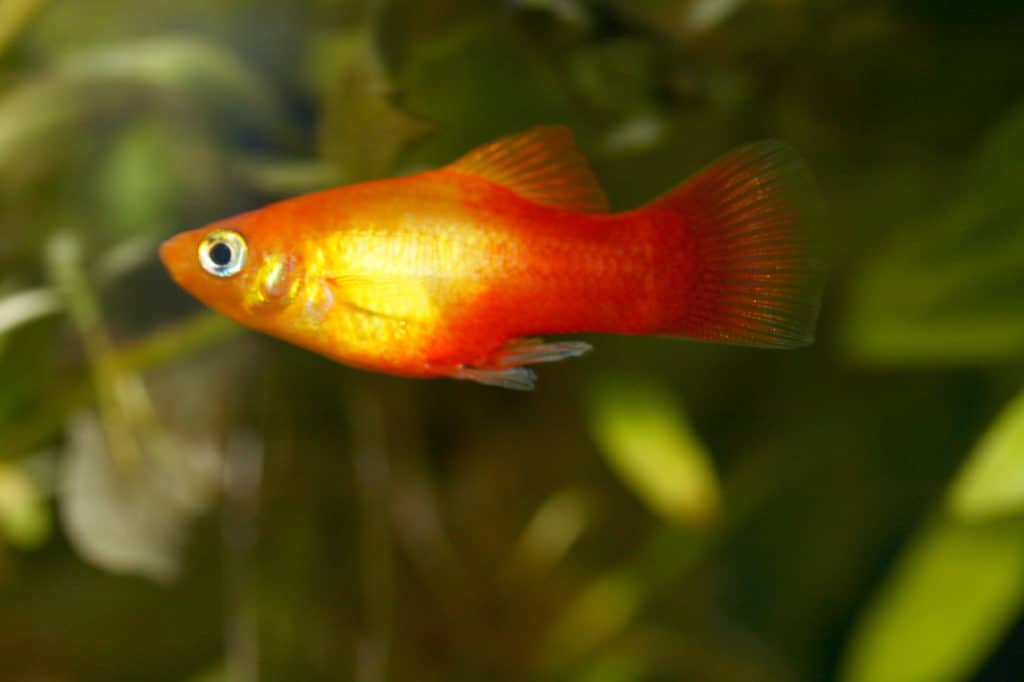
The Sunburst Platy is a good option.
These tiny yet active fish do very well in community tanks, and are extremely colorful to boot.
These peaceful fish enjoy schooling and swimming among the plants in your tank.
They can also jump, so be sure to keep them in a covered tank!
These omnivores live between three and five years, grow up to be about three inches, and do well in freshwater tanks with a lot of vegetation and other small and peaceful fish.
They prefer their tank’s pH somewhere between 6.8 and 8, but since there are different kinds of Platy, they have different water temperature preferences.
Variable Platys like their water between 72 and 75 degrees, while common and Swordtail Platys like the water somewhere around 70.
If you want to show off their colors in addition to benefitting from their help in aerating your tank, keep the water on the slightly cooler side.
2. Rainbowfish
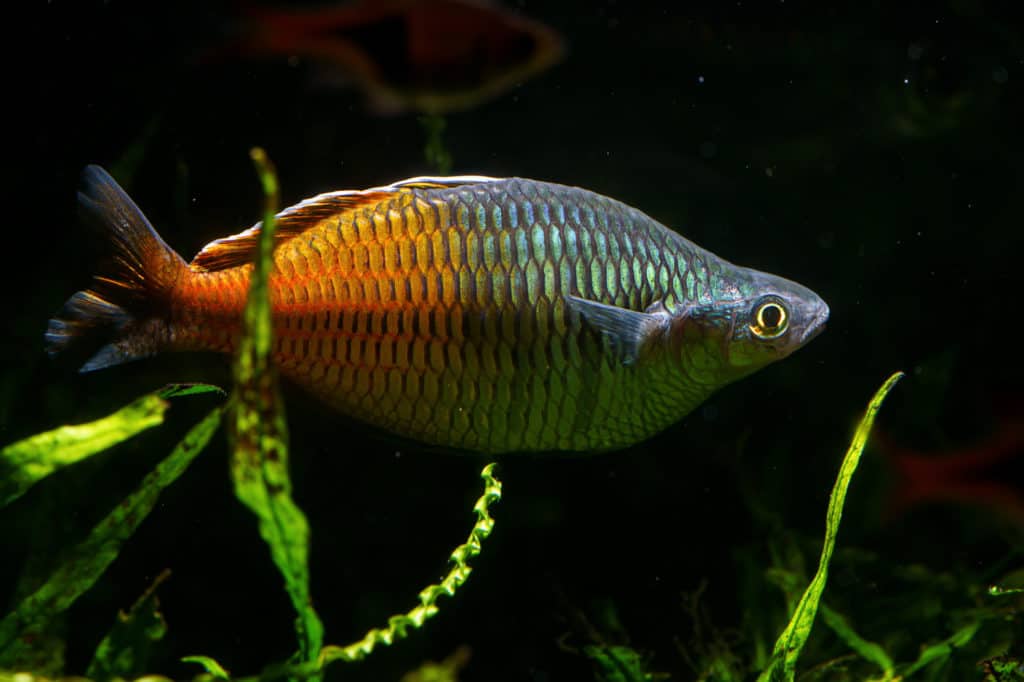
Another type is a species everyone is bound to be a fan of: Rainbowfish.
Rainbowfish are another peaceful, incredibly active fish that does best in a school.
There are a few types of rainbowfish that can be more complicated to care for than others, but overall, a lot of them are easy for beginners to look after.
They enjoy waters between 74 and 78 degrees and on the more acidic side.
Rainbowfish also do better in very large aquariums and enjoy a lot of room to swim and plants to hide and play in and around.
These omnivores live anywhere between five and eight years and grow to be about four inches.
3. Marble Hatchetfish
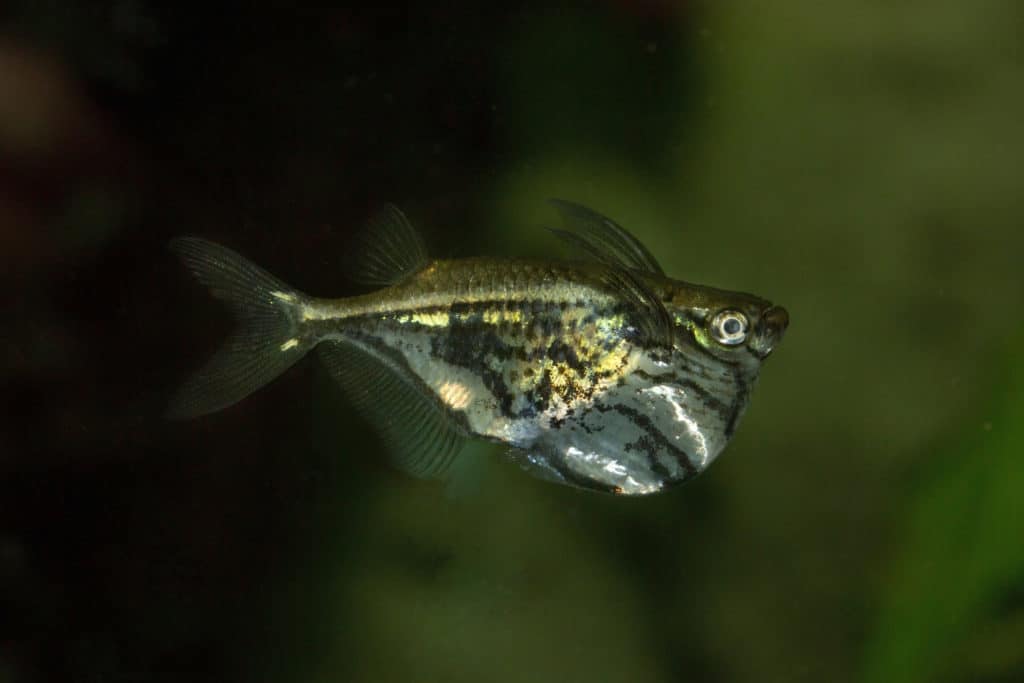
Finally, we have the Marble Hatchetfish.
Hatchetfish are truly one of a kind with their mesmerizing patterns and unique body shape.
They do very well in community tanks, especially when housed with smaller fish.
They spend a lot of their time just under the surface of the water, and all their darting around should disturb the surface enough to aid in oxygenating the water.
They’re also jumpers, so it’s a good idea to keep them in a tank with a top, because they are also known to be a little skittish.
They live about two to five years, like the tank’s temperature between 75 and 80 degrees, prefer a pH between 5.5 to 7, and grow to be about two inches.
How to Tell When Your Tank Needs Aeration
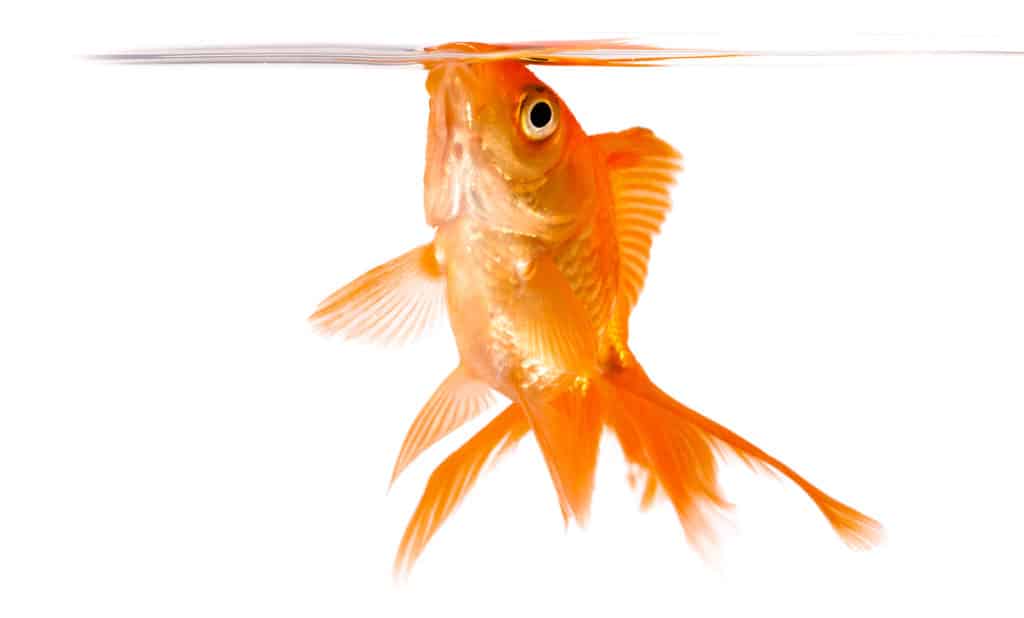
You might be wondering how you’re supposed to know when aeration is necessary in the first place.
The signs aren’t always obvious.
One way to tell is when your fish seem to be gasping at the surface of the tank or lingering around a filter, if you have one.
Another thing you should keep an eye on is your bottom-feeding fish.
If they seem to be coming up to the surface or an upper part of the aquarium, it can mean that oxygen isn’t reaching the bottom of the tank.
However, there can always be too much of a good thing.
If your tank gets too much circulation, you’ll notice your fish struggling against the current.
This can vary from method to method, though, and it can also depend on what sort of fish live in your tank.
Some fish enjoy having stronger currents while others don’t. Just do solid research on each species and go with your gut.
Why Aeration Is Important

Aeration is an absolutely essential part of keeping a healthy tank.
Aeration is the process of circulating oxygen around your tank by disturbing the surface and allowing oxygen to penetrate the water so your fish can breathe.
Fish breathe by filtering the oxygen out of the water with their gills, which has a hand in getting the oxygen into their bloodstream.
Without aeration, there won’t be enough oxygen, and without oxygen, it’s impossible for your fish to survive.
Aeration is extremely important.
Fish need air to live, and when the water is at a constant standstill, oxygen can’t get to where your fish need it most.
The Difference Between Aeration and Oxygenation

We’ve been talking about both oxygenation and aeration, and have mentioned them several times, so we feel it’s important to highlight that these are different terms.
Oxygenation is the amount of oxygen that is in the water, and oxygenation can take place without aeration.
Take plants, for example. Some distribute oxygen throughout the water without movement.
On the other hand, aeration is the process of oxygenating the water by affecting the flow of the water itself.
You cannot have aeration without oxygenation, but you can have oxygenation without aeration.
A Closer Look at Aeration
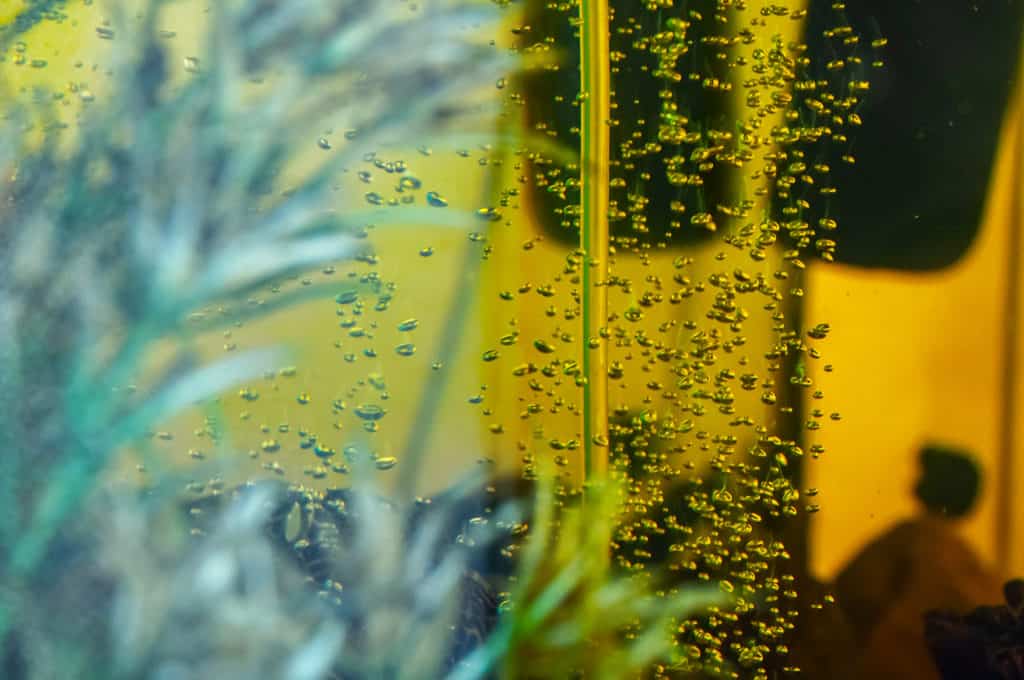
Now we’re going to dive into the actual science of aeration, and how it works, exactly.
Water and air work in harmony here.
They exchange gasses, which allows your fish to breathe.
When oxygen from the air enters the water, the water in your tank releases carbon dioxide.
Think of it as your whole tank inhaling and exhaling, and disturbance in the water is its breath.
In order for your tank to breathe, the surface of the water needs to be broken to allow this exchange of gasses, which is why you can use the cup method or invest in a good filter.
This is also the entire point of air stones and pumps in the first place.
The bubbles are meant to disturb the water’s surface, and allow for a constant, gentle churning that lets oxygen in.
Other Tips for You and Your Tank

There are other tips and tricks to aerating a tank without a pump, and once you know them all, you probably won’t have to worry about aeration again in the future.
The best way to tackle a problem is to be prepared!
One tip we have is that the wider and shallower a tank is, the less aeration will be a major concern.
Since there’s always more oxygen at the water’s surface, a shallower tank means that the oxygen doesn’t have as great a distance to travel to reach your fish.
Another tip we have is to keep a close eye on your aquarium and make sure your fish aren’t struggling with breathing or swimming.
If you happen to notice a rotten or foul smell coming from your tank, that is obviously another huge red flag.
Additional aeration might be needed, because bacteria that only thrives when there isn’t a lot of oxygen might be feeding off of uneaten food.
Finally, we recommend either investing in a dissolved oxygen meter or using a chemical test to check oxygen levels in your tank.
It’s always a good idea to have another way to check oxygen levels which doesn’t rely completely on your fish and their behavior.
A Breath of Fresh Air
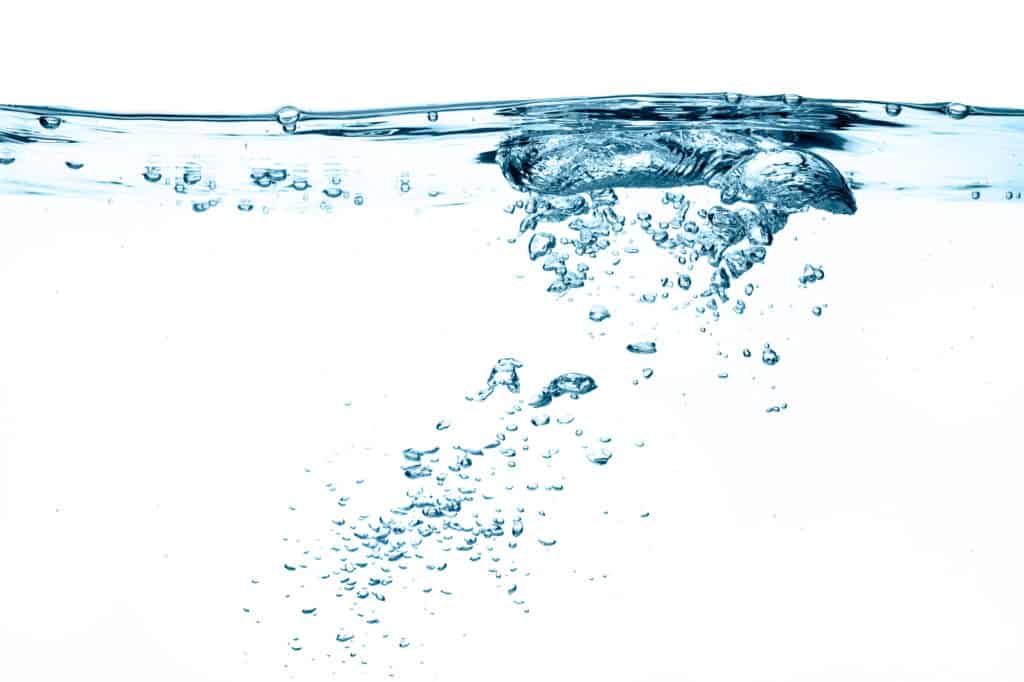
Whether your tank is in need of a temporary or permanent solution to its aeration problem, you’re now equipped with the top five best ways to aerate your tank to the best of your ability.
While some might be more effective than others, you know you can use more than one method at a time.
All there is left to do is figure out which combination is right for your tank.
Now you know why air is important to your fish, and you can pass the knowledge on to new and aspiring aquarists.
Never forget why aeration is important, and never be afraid to offer a helping hand or advice to new aquarists.
The fish and their owner will thank you.
How are your fish doing since you started aerating with these methods?
Do you have any tips or tricks you’d like to share?
Which methods did you use?
Leave us a comment down below. We’d love to hear from you.


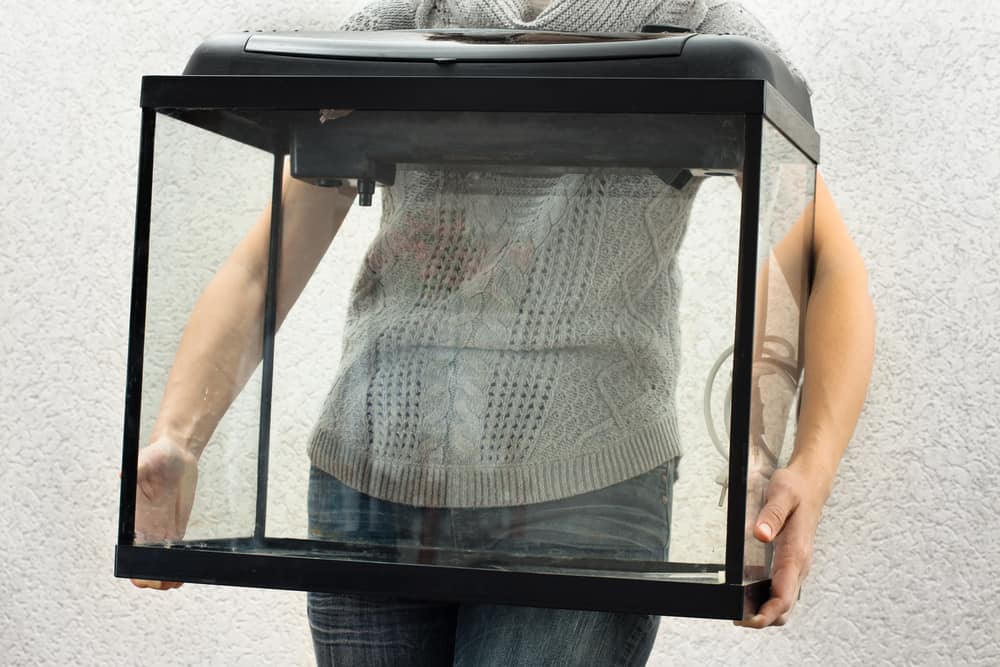

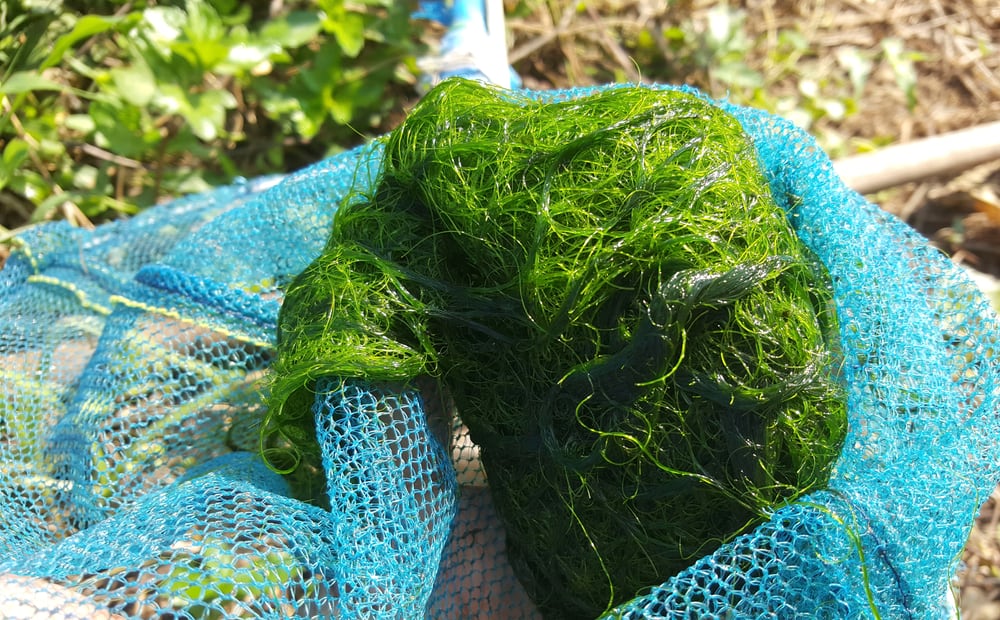
Leave a Reply
You must be logged in to post a comment.